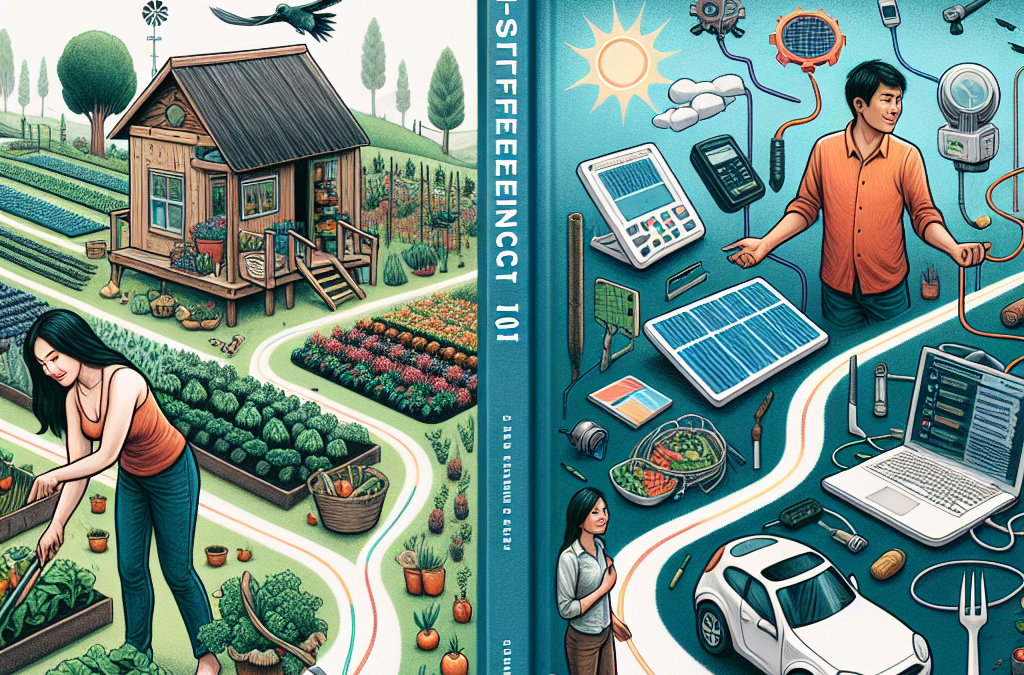Have you ever dreamed of living a more self-sufficient life? A life where you rely less on others and more on yourself to meet your needs? If so, you’re not alone. Many people are interested in becoming more self-reliant, but they don’t know where to start. In this article, we’ll explore the concept of self-sufficiency and provide tips for living a more independent life.
Introduction to Self-Sufficiency
Self-sufficiency is the ability to provide for oneself without relying on external sources or help from others. It involves being able to meet one’s own needs through personal effort and resourcefulness. This can include growing your own food, generating renewable energy at home, making and repairing items instead of buying them new, and building community through self-reliance.
The Benefits of Being Self-Reliant
There are many benefits to living a more self-sufficient lifestyle. For one, it can save you money by reducing your reliance on expensive utilities and store-bought goods. Additionally, it can increase your sense of independence and autonomy, as well as improve your overall health and wellbeing. By growing your own food and using renewable energy sources, you can reduce your exposure to pesticides and other chemicals that may be present in conventionally grown produce and nonrenewable energy sources.
Get More Homesteading and Self-Reliance Tips. Subscribe!

How to Start Living a More Independent Life
If you want to live a more self-sufficient life, there are several steps you can take to get started. Here are some tips:
1. Assess Your Current Lifestyle – Take an inventory of your current lifestyle and identify areas where you could become more self-sufficient. For example, do you currently grow any of your own food? Do you use renewable energy sources? Are there any skills you need to learn to become more self-reliant?
2. Set Goals – Once you have assessed your current lifestyle, set goals for how you want to become more self-sufficient. These goals should be specific, measurable, achievable, relevant, and time-bound (SMART).
3. Learn New Skills – To become more self-reliant, you will likely need to learn new skills such as gardening, carpentry, and DIY projects. There are many resources available online and in local communities that can teach you these skills.
4. Make Gradual Changes – Don’t try to change everything all at once. Instead, make gradual changes over time to ensure that you can sustain your new lifestyle.
Tips for Growing Your Own Food
Growing your own food is a great way to become more self-sufficient. Here are some tips for getting started:
1. Choose the Right Plants – Select plants that are easy to grow and require minimal maintenance. Vegetables like tomatoes, lettuce, and radishes are good options for beginners.
2. Prepare the Soil – Ensure that the soil is fertile and well-draining. You can add compost and other organic matter to enrich the soil.
3. Water Regularly – Keep the soil moist but not waterlogged. Consider installing drip irrigation systems to conserve water.
4. Protect From Pests – Use natural methods to protect your crops from pests such as ladybugs and neem oil.
Generating Renewable Energy at Home
Using renewable energy sources is another way to become more self-sufficient. Here are some tips for generating renewable energy at home:
1. Solar Panels – Install solar panels to generate electricity from sunlight. Ensure that your roof receives adequate sunlight throughout the day.
2. Wind Turbines – Install wind turbines if you live in an area with consistent wind. Ensure that you have enough space and clearance for the blades to spin freely.
3. Hydroelectric Power – If you have a stream or river running through your property, consider installing hydroelectric power generators.
Making and Repairing Items Instead of Buying Them New
Instead of buying new items when they break or wear out, consider making or repairing them yourself. Here are some tips for making and repairing items:
1. Learn Basic Carpentry Skills – Knowing basic carpentry skills can help you fix furniture, build shelves, and create other household items.
2. Sewing and Knitting – Learning to sew and knit can help you mend clothing and create homemade gifts.
3. Upcycling – Look for ways to repurpose old items into something useful. For example, turn an old tire into a planter or use glass jars as storage containers.
Building Community Through Self-Reliance
One of the most important aspects of self-sufficiency is building community through self-reliance. Here are some tips for building community:
1. Join Local Groups – Find groups in your community that share similar interests in self-sufficiency. This can include garden clubs, permaculture organizations, and DIY workshops.
2. Barter System – Create a barter system within your community where everyone trades their excess goods and services.
3. Share Information – Share information about your successes and failures with others in your community. This can help everyone learn from each other’s experiences.
Overcoming Challenges on the Path Towards Independence
Living a more self-sufficient lifestyle can be challenging, and there will be obstacles along the way. Here are some tips for overcoming these challenges:
1. Be Patient – Change doesn’t happen overnight. Give yourself time to adjust to your new lifestyle and overcome any hurdles that come up.
2. Stay Positive – Remember why you wanted to become more self-sufficient in the first place. Keep a positive attitude and focus on the benefits of your new lifestyle.
3. Seek Support – Don’t hesitate to seek support from friends, family, or experts in your community. They can offer guidance and encouragement as you navigate your journey towards independence.




